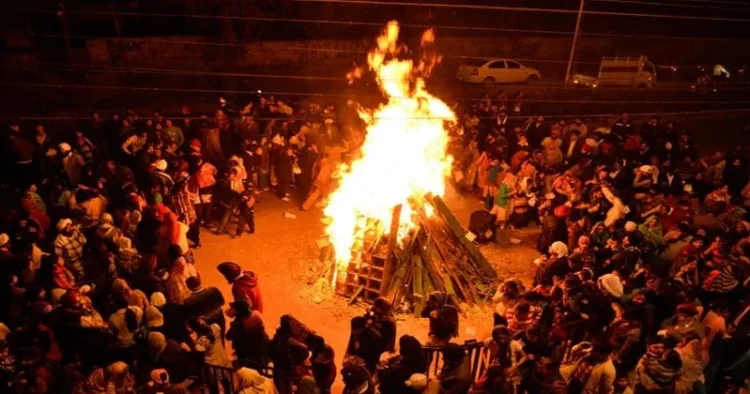As the biting chill of winter begins to wane and the Sun prepares to embark on its northward journey, Punjab and Northern India come alive with the vibrant festivities of Lohri. Celebrated annually on January 13, this festival marks the end of the winter solstice, the arrival of longer days, and the beginning of the harvest season. More than just a seasonal celebration, Lohri is a rich tapestry of folklore, gratitude, and cultural unity.
At its core, Lohri is a harvest festival. Farmers, whose lives are deeply intertwined with the cycles of nature, rejoice at the successful reaping of winter crops such as sugarcane, wheat, and mustard. The festival’s rituals center around offering thanks to Surya Devta (the Sun god) and Agni (the fire god), seeking blessings for prosperity and agricultural success in the coming seasons.
The sacred bonfire is the heart of Lohri celebrations. Lit in open spaces or courtyards, it symbolises warmth, light, and hope. Families gather around the roaring flames, offering sesame seeds, jaggery, rewri, and peanuts to the fire as a mark of reverence. The act of circling the fire, or parikrama, is a deeply spiritual tradition that unites communities in prayer and joy.
Lohri’s origins are rooted in diverse tales and folklore, each adding a unique layer to the festival’s charm. One popular belief ties the festival to Dulla Bhatti, a legendary Punjabi hero celebrated for his acts of valor and justice. Often referred to as Punjab’s Robin Hood, Dulla Bhatti is remembered for rescuing enslaved girls and arranging their marriages. His story is immortalised in folk songs sung around the Lohri bonfires, fostering a sense of pride and cultural identity.
Other interpretations trace the festival’s name to different sources. Some believe it derives from “Loi,” the wife of the saint Kabir, while others associate it with “Loh,” a device used in making chapatis. A more poetic origin connects it to “tilorhi,” a combination of the words til (sesame) and rorhi (jaggery), emphasising the festival’s culinary traditions.
Lohri is as much a gastronomic delight as it is a cultural celebration. Traditional dishes such as makke ki roti and sarson ka saag are staples on every table, complemented by sweet treats like gajak, til ladoos, and gur ki chikki. These delicacies, made from the very crops being celebrated, highlight the festival’s connection to the land and its bounty.
As the aroma of roasted peanuts and popcorn wafts through the air, families share these delights with neighbors and friends, strengthening bonds and fostering a spirit of togetherness.
Lohri 2025: Rituals and Timings
This year, Lohri is celebrated on January 13, 2025, with the Lohri Sankranti moment occurring at 9:03 AM on January 14, according to the Drik Panchang. The festival’s timing aligns with the ancient Bikrami calendar, which integrates lunar and solar cycles, ensuring that Lohri always heralds the Sun’s northward shift.
Rituals begin with the lighting of the bonfire, often using dried wood and cow dung cakes. Offerings are made, prayers are chanted, and the flames are encircled by joyful revelers. Newlyweds and families with newborns are given special attention, as Lohri symbolises fertility, prosperity, and new beginnings.
While Lohri has its roots in Punjab, its spirit transcends geographical boundaries. In states like Haryana and Himachal Pradesh, the festival is celebrated with equal enthusiasm. Among the Sindhi community, it is known as Lal Loi.
Punjabi diaspora communities across the globe—whether in Canada, the UK, or the United States—also celebrate Lohri with gusto. Bonfires are lit in parks and backyards, traditional songs are sung, and dances like bhangra and giddha bring an infectious energy to the celebrations.
Lohri’s appeal lies in its timeless message of gratitude, hope, and resilience. In an increasingly urbanised world, the festival serves as a poignant reminder of humanity’s connection to nature and the cycles of life. It also reinforces the importance of family and community, as people come together to celebrate shared traditions and values.


















Comments